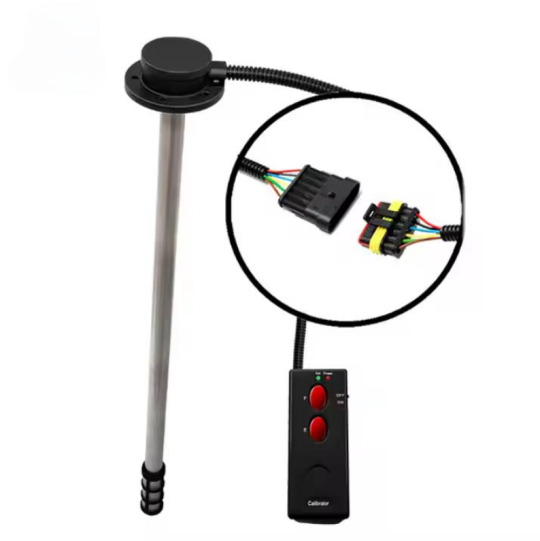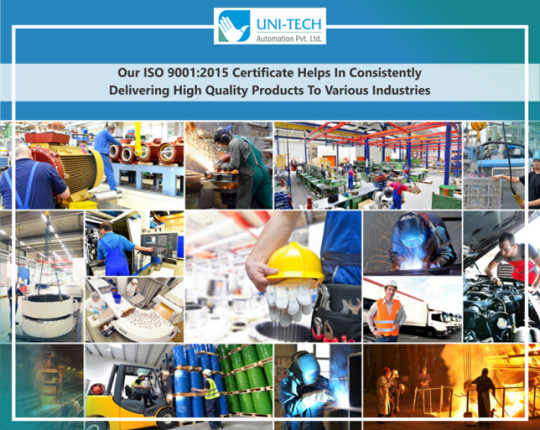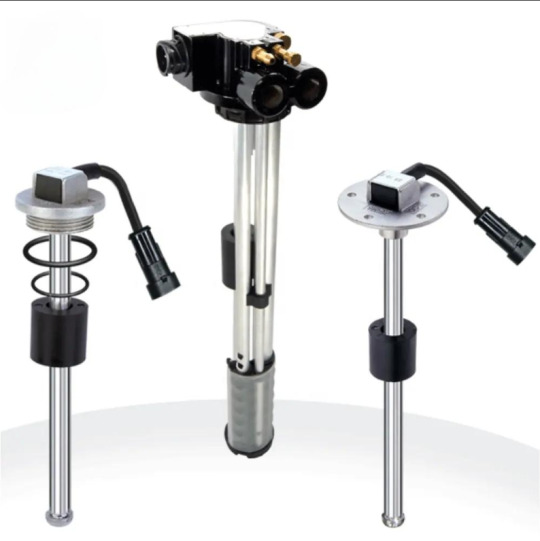#capacitive sensor
Explore tagged Tumblr posts
Text
Proximity Sensors: Enhancing Efficiency and Safety Across Industries
What are Proximity Sensors
Proximity sensors identify an object's presence even in the absence of physical touch. Without coming into direct touch with the item, they are made to recognize when it enters the sensor field. In a variety of manufacturing applications, proximity sensors are used to identify the proximity of metallic and non-metallic items.
How Do Proximity Sensors Function?
In the least complex terms, proximity sensors work by communicating information about the presence or movement of an item into an electrical sign. They yield an ON signal when the article enters their reach. There are a few critical contrasts in the manner that different closeness sensors work, as made sense below:
Capacitive Nearness Sensor Working Guideline Capacitive
Proximity sensors work by identifying changes in capacitance between the sensor and an item. Factors, for example, distance and the size of the article will influence how much capacitance. The sensor just recognizes any progressions in the limit produced between the two.
Inductive Nearness Sensor Working Standard
Inductive sensors work by recognizing vortex flows causing attractive misfortune, created by outer attractive fields on a conductive surface. The discovery curl produces an air conditioner attractive field, and impedance changes are distinguished because of the created whirlpool flows.
Attractive Vicinity Switches Working Rule Attractive
Proximity switches are similarly basic and clear. The reed end of the switch is worked by a magnet. At the point when the reed switch is enacted and ON, the sensor additionally turns ON.
It is additionally significant that proximity sensors are not impacted by the surface shade of the article identified. They depend simply on actual development and the movement of an item, so its tone doesn't assume a part in that frame of mind of the sensor.
The Role of Proximity Sensors in Modern Industries
Sensors have become indispensable in today's automated world, serving important functions such as tracking and positioning control. In this field, location and proximity sensors are reshaping several industries. By detecting nearby vehicles in the automotive industry and accurately tracking the location of delivered packages in production, these sensors show their versatility and potential in several fields.
Robotics
Both position and proximity sensors are used in many applications in the field of robotics. For example, linear position sensors are commonly used in robotics and industrial settings for object detection, part fixation, and machine control. These sensors play an essential role in detecting the location, distance, and proximity of moving objects and provide important information for robot navigation and manipulation.
Industrial Automation
Today many manufacturers use these sensors to improve work productivity and efficiency. Integrating position and proximity sensors into production systems enables accurate detection and tracking of objects on conveyor belts, robotic arms, and assembly lines. This combination enables precise object positioning and motion control in industrial processes.
Security systems
Combining proximity and location sensors, security systems can be used to track and control the movement of objects in a certain area. It is useful in surveillance, burglar alarms, and access control systems.
Automotive Applications
The combination of these position and proximity sensors can be used in parking systems to detect open spaces and nearby cars in a parking lot, and accurately track the location of a vehicle for parking assistance. These sensors are also used to improve the safety and performance of Advanced Driver Assistance Systems (ADAS) vehicles.
Smart Healthcare
Location and proximity sensors play a vital role in healthcare, facilitating the monitoring and management of various aspects of medical facilities. Wearable proximity sensors play an important role in both acute and chronic health conditions, as they allow non-contact detection and monitoring of physical movements and interactions.
Food and Beverage Industry
A proximity sensor for food is a type of sensor that is designed specifically for use in the food industry. It is used to detect the presence or absence of food items during various stages of food processing, packaging, and handling.
As technology advances, the integration of location and proximity sensors is expected to increase security, automation, and sensor innovation. based systems in various industries.
#proximity sensors#inductive proximity sensor#proximity sensor types#inductive sensor#what is proximity sensor#proximity sensor price#proximity sensor working#working of proximity sensor#omron proximity sensor#sensors working principle#magnetic proximity sensor#optical proximity sensor#proximity switch sensor#inductive sensor working principle#an inductive proximity sensor comprises#autonics proximity sensor#features of sensors#proximity sensor definition#proximity switch function#capacitive sensor#capacitive proximity sensor#capacitive level sensor#capacitive sensor working
0 notes
Text

The working theory of the capacitance level sensor(CLS) uses capacitance that is created by liquid that fill in the positive and negative probe. With the change of the liquid level, the change of the capacitance will be converted to standard electrical output signal. The main component is the highly-integrated capacitance chips, by the exact temperature compensation and linear correction, the sensor has the advantage of high accuracy, high stability and continuous measurement.
4 notes
·
View notes
Text
#capacitive proximity sensors#capacitive proximity sensor#proximity sensor#best proximity sensor#capacitive proximity switches#capacitive proximity sensors in lexington
0 notes
Text
Genset Electronic Controller and Sensors provider
UNI-TECH Automation Pvt. Ltd specializes in providing high-quality Genset Electronic Controller & Sensors, ensuring reliable performance and efficiency for your power generation needs.

#UL & CSA approved Cables India#Control Panel Suppliers Pune#Wiring harness manufacturer Pune#Sheet metal fabrication & Powder coating#Genset Electronic Controller & Sensors#Capacitive Fuel level sensors
0 notes
Text
U.S. Pressure Sensor Market: Growth, Trends, and Future Outlook
The U.S. pressure sensor market is experiencing significant growth, driven by advancements in technology and increasing applications across various industries. In 2024, the market was valued at USD 22.2 billion and is projected to reach USD 39.7 billion by 2032, reflecting a compound annual growth rate (CAGR) of 7.7% during the forecast period.

Key Drivers of Market Growth
1. Advancements in MEMS Technology Micro-Electro-Mechanical Systems (MEMS) technology has revolutionized pressure sensor design, enabling smaller, more accurate, and cost-effective sensors. These innovations have expanded their use across consumer electronics, automotive systems, industrial automation, and medical devices.
2. Integration with IoT Devices The rising deployment of Internet of Things (IoT) solutions across smart homes, manufacturing facilities, and healthcare systems has accelerated the demand for real-time sensing and monitoring. Pressure sensors integrated into IoT devices provide crucial data for predictive maintenance and system optimization.
3. Regulatory Compliance and Safety Demands Stringent safety and environmental regulations have driven industries to implement pressure sensing technology for system monitoring and compliance. In automotive applications, for instance, pressure sensors are vital for tire pressure monitoring systems (TPMS), fuel injection systems, and emissions control.
Market Segmentation Overview
By Technology:
Piezoresistive Sensors: Widely adopted due to their stability, sensitivity, and long-term performance.
Electromagnetic Sensors: Suitable for harsh environments where contactless operation is beneficial.
Capacitive Sensors: Offer high precision with low power consumption, used in compact devices.
Resonant Solid-State Sensors: Ideal for applications requiring high-frequency operation.
Optical Sensors: Used in sectors with high electromagnetic interference, such as aerospace.
By Application:
Automotive: Largest application area, involving engine performance monitoring, emissions management, and ADAS integration.
Healthcare: Used in respiratory monitoring, infusion pumps, and patient monitoring equipment.
Industrial: Integral to process control, equipment diagnostics, and factory automation.
Consumer Electronics: Applied in wearables, smartphones, and smart appliances.
Aerospace and Defense: Critical for altitude measurement, cabin pressure regulation, and hydraulic systems.
Future Outlook
With the expansion of connected technologies and the need for reliable real-time monitoring across various sectors, the demand for pressure sensors is poised to grow steadily. Investments in smart manufacturing, healthcare innovation, and autonomous mobility will further drive the adoption of advanced sensor technologies.
#pressure sensors#MEMS sensors#piezoresistive sensors#capacitive sensors#IoT sensors#automotive sensors#industrial automation#U.S. sensor market#smart devices#sensor technology
0 notes
Text
#spoof detection#fake fingerprint detection#biometric security#biometric solutions#optical fingerprint scanner#optical scanner#capacitive fingerprint sensor#capacitive fingerprint scanner#capacitive scanner#biometric spoofing#fingerprint spoofing#anti-spoofing technology#what is spoof detection#spoofing biometrics#anti spoofing technology#spoofing detection#what is spoof#fingerprint spoof#spoof proof#spoof identity#biometric spoofing and deepfake detection#spoof fingerprint
0 notes
Text
You guys know about the iPhone shutter button right? The one on the side of the phone?
Fuck that. It's stupid. It's redundancy for the sake of "innovation" that never needed to happen. 2 words - Sony Xperia. Those phones manage to have aperture control (on like, one Xperia, but I'm ignoring that for now), a 2 stage shutter button, real moving mechanical optical zoom, and a roughly 4k display. None of those features are innovative btw (except for the zoom). Many phones had aperture control, a two stage shutter was just imported from their cameras to their phone, and a 21:9 screen that is roughly 4k is still *not* a 4k display.
"it can help control zoom" pinching is more accraute
"focus control" tap the damn screen, ya lazy fuck
"aperture control" you don't have that. That's not a thing on iPhone. That's never existed on iPhone.
"shutter speed, exposure, and ISO control" CONGRATS!!! You just learned how a fucking photo sees the world!! Now go into the sub menus or tap on the yellow box and start sliding on the sun line.
"it can be programmed" that's what the action button was for, idiot.
"it opens the camera app" ya know what else opens the camera app?? USING YOUR SCREEN!! On android you can program a double tap of the power button.
And to all of you godforsaken imbeciles who defend apple to the last poisonous breath of theirs, I need you to know I have a Mac. I quite like my Mac. I've had an iPhone. I quite liked the iPhone 12 mini. I'm just pointing out the flaws in Apple's design. This was stupid. They could have done much better. Gestures would have been much better for the average consumer, and no one really wanted this. Else they would buy a phone that features this as a real selling point, with features to back it up, like, I don't know, being able to plug into a camera and be used as a second display??
#fuck apple#stupid stupid stupid#so stupid#it pisses me off#i cant justify this logic#i just hate that feature because its “innovative”#WHEN ITS EXISTED FOR YEARS!!!#but ohhhhh#it wasnt made of saphire and used capacitive touch sensors#so it must not be good!!!#OBVIOUSLY IT WAS GOOD#IT WASNT FOR YOU#YA DUMB FUCK#i hate it#i hate it so much#okay rant over
0 notes
Text
Unitech: Genset Electronic Controller & Sensors provider
UNI-TECH Automation Pvt. Ltd specializes in providing high-quality Genset Electronic Controller & Sensors, ensuring reliable performance and efficiency for your power generation needs.

#UL & CSA approved Cables India#Control Panel Suppliers Pune#Wiring harness manufacturer Pune#Sheet metal fabrication & Powder coating#Genset Electronic Controller & Sensors#Capacitive Fuel level sensors
0 notes
Text
Capacitive Sensor Market Share, Size and Forecast 2024-2032
The global capacitive sensor market size is calculated at USD 32.2 Billion in 2023 and is projected to hit around USD 49.0 Billion by 2032 with a CAGR of 4.6%.
0 notes
Text

The working theory of the capacitance level sensor(CLS) uses capacitance that is created by liquid that fill in the positive and negative probe. With the change of the liquid level, the change of the capacitance will be converted to standard electrical output signal, The main component is the highly-integrated capacitance chips, by the exact temperature compensation and linear correction, the sensor has the advantage of high accuracy, high stability and continuous measurement.
4 notes
·
View notes
Text
#Capacitive Sensors Market#Capacitive Sensors Market Trends#Capacitive Sensors Market Growth#Capacitive Sensors Market Industry#Capacitive Sensors Market Research#Capacitive Sensors Market Report
0 notes
Text
#capacitive proximity sensors#capacitive proximity sensor#proximity sensor#best proximity sensor#capacitive proximity switches#capacitive proximity sensors in lexington
0 notes
Text
Leading Automation Company in Pune | Expert Solutions
Top Automation Company in Pune, offering control panel suppliers, UL & CSA approved cables India, and capacitive fuel level sensors. Contact us today!

#UL & CSA approved Cables India#Control Panel Suppliers Pune#Wiring harness manufacturer Pune#Sheet metal fabrication & Powder coating#Genset Electronic Controller & Sensors#Capacitive Fuel level sensors
0 notes
Text
Proximity Precision: Analyzing the Steady 6.1% CAGR in the Capacitive Proximity Sensor Market (2023-2033)
The global Capacitive Proximity Sensor Market is poised for substantial growth, with a projected valuation of US$ 2.3 billion by 2033, as stated in a recent market analysis. The market is anticipated to maintain a robust growth trajectory, boasting a steady CAGR of 6.1% from 2023 to 2033. In 2023, the market is estimated to reach US$ 1.3 billion, underlining the sector’s strong performance.
The Capacitive Proximity Sensor Market is a dynamic and rapidly expanding segment within the sensor industry. These sensors play a pivotal role in detecting the presence or absence of objects and measuring their distance or position without physical contact. The market’s growth is primarily attributed to the proliferation of industrial automation, the widespread use of consumer electronics, and the integration of touch interfaces across various applications.
Request a Sample of this Report: https://www.futuremarketinsights.com/reports/sample/rep-gb-17950
Key Takeaways:
The global Capacitive Proximity Sensor Market is projected to reach a valuation of US$ 2.3 billion by 2033, with a steady CAGR of 6.1%.
The United States is set to dominate the market, with an estimated revenue share of US$ 383.3 million by 2033.
Industrial automation, consumer electronics, and automotive applications are the key growth drivers of the market.
Technological advancements and market saturation represent potential challenges.
The Capacitive Proximity Sensor Market continues to evolve, driven by technological innovation and the ever-expanding applications of these sensors in various industries. As the demand for automation and touch interfaces intensifies, the market is poised for substantial growth, offering ample opportunities for businesses and investors alike.
Drivers and Opportunities:
Capacitive proximity sensors serve as critical components for level detection, object detection, and quality control processes within industrial automation. Their application spans various industries, including manufacturing, automotive, and food processing. Moreover, capacitive sensors have become indispensable in consumer electronics, particularly in the development of touchscreens for smartphones, tablets, and laptops. The escalating demand for sensing devices is a driving force behind the market’s expansion.
Request for Customization: https://www.futuremarketinsights.com/customization-available/rep-gb-17950
Competitive Landscape and Regional Trends:
The United States has emerged as a key player in the Capacitive Proximity Sensor Market, with a projected market size of US$ 383.3 million within the forecast period. Notably, the market has exhibited a CAGR of 7.3% in the historical period, indicating a steady and robust growth pattern. The United States is positioned to dominate the market, securing a substantial revenue share by 2033.
The United States boasts a formidable electronics and manufacturing sector, driving the demand for capacitive proximity sensors. These sensors are integral to automation tasks, including object detection, level detection, and quality control. Moreover, the nation plays a pivotal role as both a manufacturer and a consumer in the consumer electronics industry, particularly in the domain of smartphones, tablets, and touchscreen devices.
Furthermore, the automotive industry in the United States is a significant contributor to the capacitive proximity sensor market. Applications such as keyless entry systems, touch panels, and parking assistance systems rely heavily on these sensors. The country’s commitment to innovation and technology development has further catalyzed demand. The rapid evolution of IoT technology and the widespread adoption of smart devices have created a robust market for various sensors, including capacitive proximity sensors.
Restraints:
While the market exhibits promising growth prospects, it is not devoid of challenges. Factors such as the need for continuous technological advancements and the potential for market saturation present restraints that must be navigated by industry players.
Region-wise Insights:
In addition to the United States, other regions are also showing significant potential in the capacitive proximity sensor market. As industrial automation, consumer electronics, and automotive applications continue to expand globally, opportunities for market growth extend across various regions.
Category-wise Insights:
Within the market, specific categories of capacitive proximity sensors cater to different industries and applications. These categories are expected to witness distinct growth patterns and demands.
Buy Complete Report : https://www.futuremarketinsights.com/checkout/17950
Capacitive Proximity Sensor Market Outlook by Category
Type:
Touch Sensors
Motion Sensors
Position Sensors
Others
End-Use:
Automotive
Industrial
Aerospace & Defense
Marine
Others
0 notes